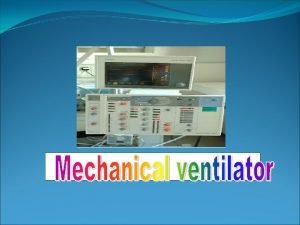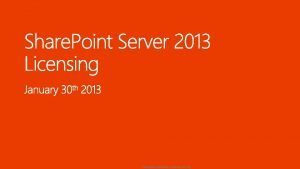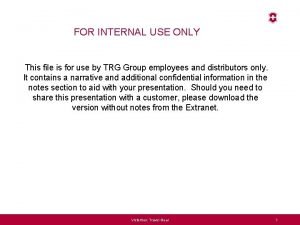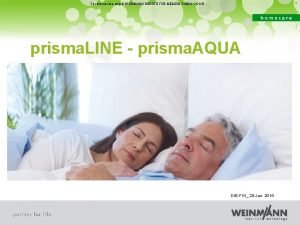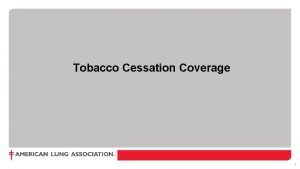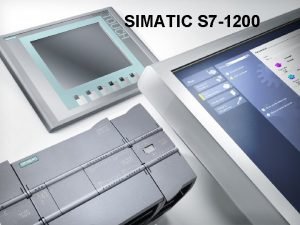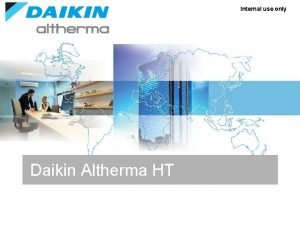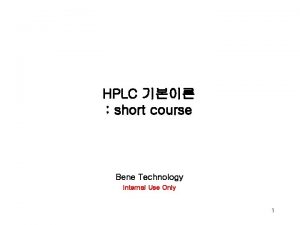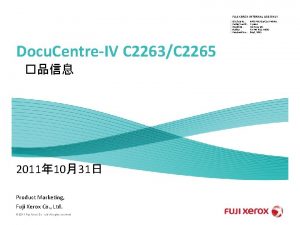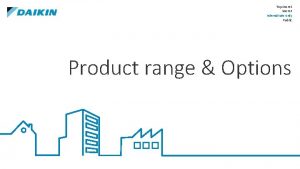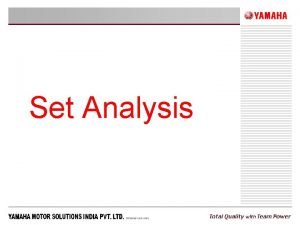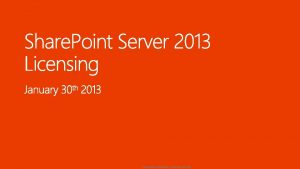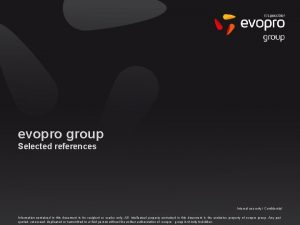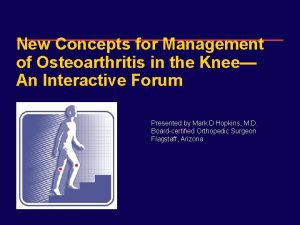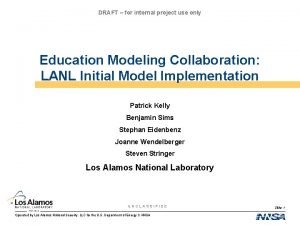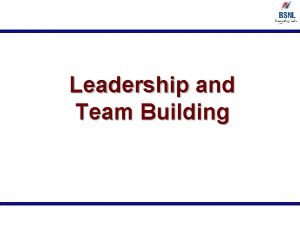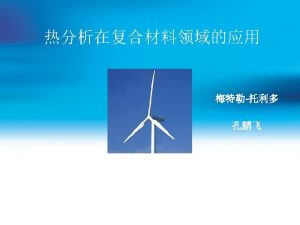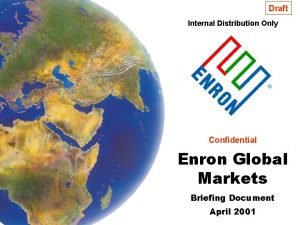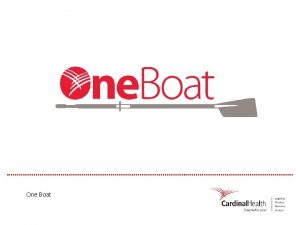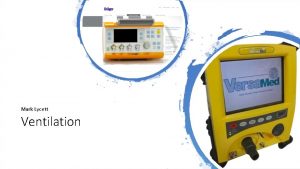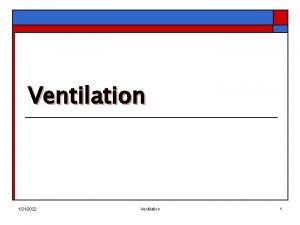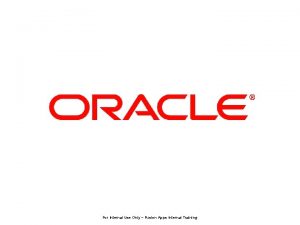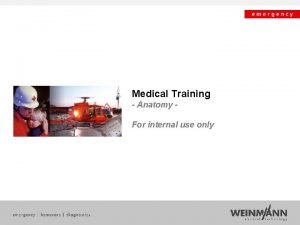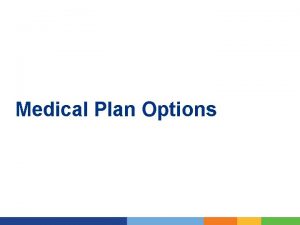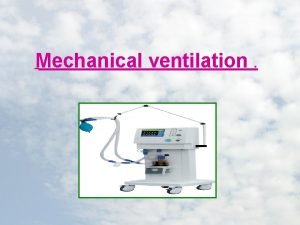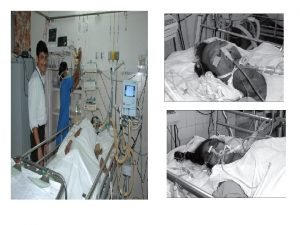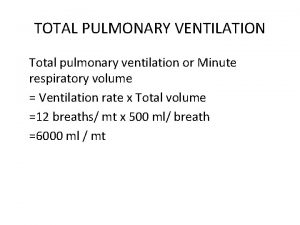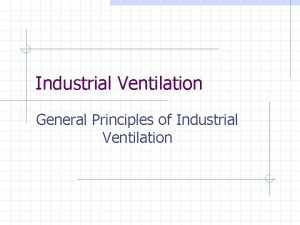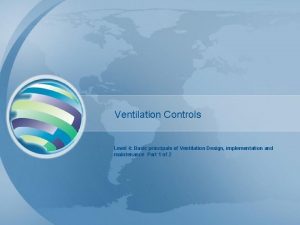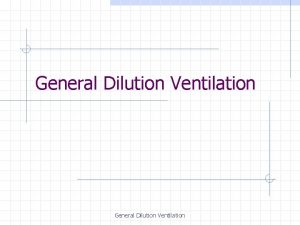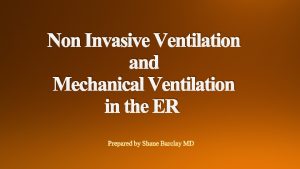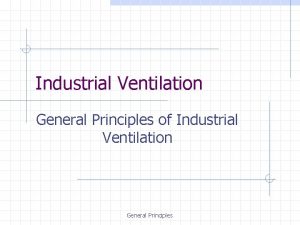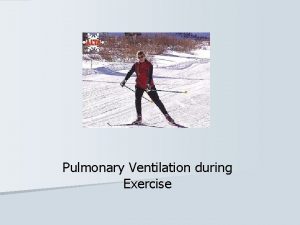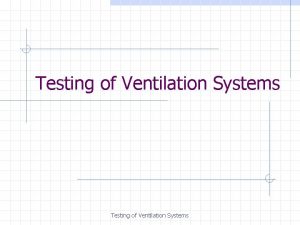Medical Training Ventilation Options For internal use only











































- Slides: 43

Medical Training - Ventilation Options For internal use only

© WEINMANN GERÄTE FÜR MEDIZIN GMBH+CO. KG, Author: S. El Diwany MEDUMAT Transport Product Presentation, June 2008 Objective of Presentation • This presentation on ventilation gives the reader an overview of the available pressure and volume-controlled types of ventilation. . • The conventional processes, including setting options on the ventilators, are explained. • The reader will also learn about the use of Non Invasive Ventilation (NIV) with MEDUMAT Transport. 2

© WEINMANN GERÄTE FÜR MEDIZIN GMBH+CO. KG, Author: S. El Diwany MEDUMAT Transport Product Presentation, June 2008 Contents • • • Functions and Physiological Goals of Ventilation Basics Terminology Assisted Ventilation Modes Controlled Ventilation Modes – Volume-controlled Ventilation – Pressure-controlled Ventilation • Non-Invasive Ventilation (NIV) 3

© WEINMANN GERÄTE FÜR MEDIZIN GMBH+CO. KG, Author: S. El Diwany MEDUMAT Transport Product Presentation, June 2008 Oxygen or Ventilation ? 4

© WEINMANN GERÄTE FÜR MEDIZIN GMBH+CO. KG, Author: S. El Diwany MEDUMAT Transport Product Presentation, June 2008 Ventilation Functions • Influence gas exchange • Take over the work of respiration • The type of ventilation describes the changing relationship between patient and ventilator: – Controlled: The device takes over the work of breathing. – Augmented/ assisted/ supported: The work of breathing is shared by the device and patient. – Spontaneous: The patient takes on the work of breathing. 5

© WEINMANN GERÄTE FÜR MEDIZIN GMBH+CO. KG, Author: S. El Diwany MEDUMAT Transport Product Presentation, June 2008 Physiological Goals of Ventilation • • Alveolar ventilation Arterial oxygenation Increase of end-inspiratory and end-expiratory lung volume Unloading respiratory musculature 6

© WEINMANN GERÄTE FÜR MEDIZIN GMBH+CO. KG, Author: S. El Diwany MEDUMAT Transport Product Presentation, June 2008 Clinical Goals of Ventilation • • • Treatment of hypoxemia Treatment of respiratory acidosis Treatment of dyspnea Prevention/treatment of atelectasis Treatment of respiratory muscle fatigue Allow analgesic sedation and muscle relaxation Reduction of systemic and/or myocardial oxygen need Reduction of intracranial pressure Stabilization of thoracic wall 7

© WEINMANN GERÄTE FÜR MEDIZIN GMBH+CO. KG, Author: S. El Diwany MEDUMAT Transport Product Presentation, June 2008 VS CPAP/ ASB PSV CPPV SVV SPV NIV VC PC PCV ASB BIPAP IPPV SIMV Bi. Level/ ASB PEEP PLV 8

© WEINMANN GERÄTE FÜR MEDIZIN GMBH+CO. KG, Author: S. El Diwany MEDUMAT Transport Product Presentation, June 2008 Spontaneous Breathing • Inspiration: Negative pressure • Expiration: Positive pressure 9

© WEINMANN GERÄTE FÜR MEDIZIN GMBH+CO. KG, Author: S. El Diwany MEDUMAT Transport Product Presentation, June 2008 Ventilation - Terminology 10

© WEINMANN GERÄTE FÜR MEDIZIN GMBH+CO. KG, Author: S. El Diwany MEDUMAT Transport Product Presentation, June 2008 Spontaneous Breathing vs. Ventilation • Spontaneous breathing: Passive volume expansion of lungs effected by pulling of rib musculature and diaphragm • Ventilation: Active volume expansion by introducing volume or ventilation pressure. 11

© WEINMANN GERÄTE FÜR MEDIZIN GMBH+CO. KG, Author: S. El Diwany MEDUMAT Transport Product Presentation, June 2008 Ventilation Systems • Terminology • Assisted ventilation • Controlled ventilation • Volume-controlled • Pressure-controlled • Combinations 12

© WEINMANN GERÄTE FÜR MEDIZIN GMBH+CO. KG, Author: S. El Diwany MEDUMAT Transport Product Presentation, June 2008 PEEP • Definition: – Positive End Expiratory Pressure – In controlled ventilation PEEP corresponds to CPAP of spontaneous breathing – Advantages: • Decline in atelectasis • Higher volume per unit of pressure increase (predilation) – Disadvantages: • Increase of maximum ventilation pressure • Impairment of venous blood backflow • Application: – With every type of ventilation at least PEEP 5 13

© WEINMANN GERÄTE FÜR MEDIZIN GMBH+CO. KG, Author: S. El Diwany MEDUMAT Transport Product Presentation, June 2008 Assisted Ventilation Modes • CPAP mode increases respiratory pressure level to raise the Functional Residual Capacity (FRC). • This mode is used only on patients with sufficient spontaneous breathing. • Assisted Spontaneous Breathing (ASB) mode provides pressure support in cases of insufficient spontaneous breathing. The patient can breathe spontaneously without restriction, but gets support for his respiratory work from MEDUMAT Transport. 14

© WEINMANN GERÄTE FÜR MEDIZIN GMBH+CO. KG, Author: S. El Diwany MEDUMAT Transport Product Presentation, June 2008 Supporting Mode (CPAP) • Continuous Positive Airway Pressure (CPAP) • Supports the respiratory work of the patient • Respiratory rate, pattern and tidal volume are determined by patient • Respiratory work is made easier. 15

© WEINMANN GERÄTE FÜR MEDIZIN GMBH+CO. KG, Author: S. El Diwany MEDUMAT Transport Product Presentation, June 2008 Assisted Spontaneous Breathing (ASB) • • Assisted spontaneous breathing Pressure support of every breath of patient Patient has to “trigger” the device Can combine CPAP, BIPAP, SIMV • • • Spontaneous breathing CPAP / PEEP 10 cm H 2 O ASB 7 cm H 2 O 16

© WEINMANN GERÄTE FÜR MEDIZIN GMBH+CO. KG, Author: S. El Diwany MEDUMAT Transport Product Presentation, June 2008 Controlled Ventilation • Takes over all respiratory work of patient • Determines tidal volume by ventilation modes of – pressure-controlled – volume controlled • Assisted modes (ASB/CPAP) can be combined 17

© WEINMANN GERÄTE FÜR MEDIZIN GMBH+CO. KG, Author: S. El Diwany MEDUMAT Transport Product Presentation, June 2008 Volume vs. Pressure-controlled Ventilation • Volume-controlled modes ensure tidal and Respiratory Minute Volume (RMV) with adherence to an upper pressure limit. • Pressure-controlled modes maintain maximum ventilator pressures and have a more physiological character. There is no volume guarantee, which makes monitoring of tidal volume and RMV necessary. • Supporting modes combine the advantages of both systems. 18

© WEINMANN GERÄTE FÜR MEDIZIN GMBH+CO. KG, Author: S. El Diwany MEDUMAT Transport Product Presentation, June 2008 Volume-controlled Ventilation • The inspiratory gas flow is maintained until a certain volume is reached. • Airway pressure is passive (danger of barotrauma). • Combination with pressure limit makes sense. • Initially areas with high compliance and low resistance are ventilated and then plateau pressure is reached. 19

© WEINMANN GERÄTE FÜR MEDIZIN GMBH+CO. KG, Author: S. El Diwany MEDUMAT Transport Product Presentation, June 2008 Volume-controlled Ventilation Advantage: • Tidal volume is maintained even when pulmonary mechanics change. Settings: Respiratory Minute Volume (rate x tidal volume) Limit or control dimension: maximum airway pressure Disadvantage: • Danger of pressure-caused damage to lungs when pulmonary mechanics deteriorate 20

© WEINMANN GERÄTE FÜR MEDIZIN GMBH+CO. KG, Author: S. El Diwany MEDUMAT Transport Product Presentation, June 2008 Abbreviations in Volume-controlled Ventilation IPPV: Intermittent Positive Pressure Ventilation PLV: Pressure Limited Ventilation CPPV: Continuous Positive Pressure Ventilation (with set PEEP level) VC: Volume Control SVV: Smart Volume Ventilation 21

© WEINMANN GERÄTE FÜR MEDIZIN GMBH+CO. KG, Author: S. El Diwany MEDUMAT Transport Product Presentation, June 2008 Volume-controlled Ventilation • IPPV/CPPV – Intermittent Positive Pressure Ventilation – With PEEP = CPPV : Continuous Positive Pressure Ventilation – Corresponds to completely controlled ventilation – Time-controlled, constant volume, limited pressure 22

© WEINMANN GERÄTE FÜR MEDIZIN GMBH+CO. KG, Author: S. El Diwany MEDUMAT Transport Product Presentation, June 2008 IPPV Settings • • Respiratory rate: Choice between 10 to 20 /minute Tidal volume: 6 to 10 ml kg KG I: E ratio: 1: 1 or 1: 1, 7 Oxygen concentration: Fi. O 2 0, 3 – 1, 0 Pressure limit: p. Max 30 cm H 2 O PEEP: 5 cm H 2 O Inspiration segmentation (plateau) 23

© WEINMANN GERÄTE FÜR MEDIZIN GMBH+CO. KG, Author: S. El Diwany MEDUMAT Transport Product Presentation, June 2008 Special Emergency Mode • IPPV ventilation • Pre-set for – Baby (10 kg) – Child (20 kg) – Adult (75 kg) 24

© WEINMANN GERÄTE FÜR MEDIZIN GMBH+CO. KG, Author: S. El Diwany MEDUMAT Transport Product Presentation, June 2008 Special Emergency Mode 25

© WEINMANN GERÄTE FÜR MEDIZIN GMBH+CO. KG, Author: S. El Diwany MEDUMAT Transport Product Presentation, June 2008 SIMV • Synchronized Intermittent Mandatory Ventilation • Patient is given a pre-set minimum number of breaths with a defined volume (see IPPV) • Combination of controlled ventilation, synchronized mechanical breaths triggered by the patient, and spontaneous breathing • The patient may breathe independently (see CPAP-ASB) and direct the device. • Synchronized mechanical breaths are possible only within an “anticipated breath window”. 26

© WEINMANN GERÄTE FÜR MEDIZIN GMBH+CO. KG, Author: S. El Diwany MEDUMAT Transport Product Presentation, June 2008 SIMV Settings • Settings for IPPV/CPPV breaths – Tidal volume 6 to 10 ml kg. KG – Respiratory rate: 4 to 10 – I: E 1: 1 – 1. 7 • PEEP/CPAP 5 cm H 2 O • Setting for SIMV – Trigger threshold (l/min) of patient 3 l/min • Oxygen concentration: Fi. O 2 0. 3 – 1, 0 • Pressure limit: p. Max 30 cm H 2 O 27

© WEINMANN GERÄTE FÜR MEDIZIN GMBH+CO. KG, Author: S. El Diwany MEDUMAT Transport Product Presentation, June 2008 SVV • Smart Volume Ventilation • Weinmann‘s special mode of volume-controlled ventilation • All pressure-controlled ventilation modes can be set 28

© WEINMANN GERÄTE FÜR MEDIZIN GMBH+CO. KG, Author: S. El Diwany MEDUMAT Transport Product Presentation, June 2008 Pressure-controlled Ventilation • Application of gas flow until a pre-set airway pressure is reached. • The pressure is maintained for a certain amount of time and then reduced again during expiration. • Tidal volume results from the ventilation pressure and the mechanical characteristics of the lungs. • Tidal volume and gas flow are dependent on the mechanical characteristics of the lungs. • Initially high and then decreased flow = decelerated flow 29

© WEINMANN GERÄTE FÜR MEDIZIN GMBH+CO. KG, Author: S. El Diwany MEDUMAT Transport Product Presentation, June 2008 Pressure-controlled Ventilation Disadvantage: Advantage: • When respiratory mechanics • The optimum pressure range deteriorate, tidal volume decreases and with it the can be set individually for each ventilation. lung. The lung is protected and • Tidal volume has to be measured ventilator-induced lung at end-expiratory point when damage can be avoided. pressure-controlled or nonvolume constant ventilation is used. Settings: Airway pressure, respiratory rate Limit or control dimension: Tidal or respiratory minute volume 30

© WEINMANN GERÄTE FÜR MEDIZIN GMBH+CO. KG, Author: S. El Diwany MEDUMAT Transport Product Presentation, June 2008 Abbreviations in Pressure-controlled Ventilation Modes PCV: Pressure Control Ventilation allows no spontaneous breathing by patient. BIPAP: Biphasic Positive Airway Pressure ® Bi. Level: Combination of timed change of two pressure levels SPV: Smart Pressure Ventilation Weinmann-specific platform for set up of pressurecontrolled ventilation mode. 31

© WEINMANN GERÄTE FÜR MEDIZIN GMBH+CO. KG, Author: S. El Diwany MEDUMAT Transport Product Presentation, June 2008 SPV • • Smart Pressure Ventilation Weinmann’s special mode of pressure-controlled ventilation All pressure-controlled ventilation modes can be set up CPAP/ASB can be used only at the lower pressure level 32

© WEINMANN GERÄTE FÜR MEDIZIN GMBH+CO. KG, Author: S. El Diwany MEDUMAT Transport Product Presentation, June 2008 Bi-level Ventilation • Biphasic Positive Airway Pressure = ventilation with two pressure levels (also known as BI-level Positive Airway Pressure) • Pressure and time-controlled ventilation mode • Volume is not constant ! • State-of-the-art ventilation mode in Intensive Care Unit (ICU) 33

© WEINMANN GERÄTE FÜR MEDIZIN GMBH+CO. KG, Author: S. El Diwany MEDUMAT Transport Product Presentation, June 2008 Bi-level • Mode of Operation: – Combination of CPAP and pressure-controlled ventilation – Two (2) different pressure levels – Spontaneous breathing at both levels is allowed at any time during ventilation – ASB support is possible 34

© WEINMANN GERÄTE FÜR MEDIZIN GMBH+CO. KG, Author: S. El Diwany MEDUMAT Transport Product Presentation, June 2008 Bi-Level: Settings • Rate calculation: – 60 sec. / targeted rate – e. g. , 10 rate = 6 -second respiratory cycle • Respiratory cycle: – Set I: E via time selection – e. g. : T 1(Inspiration) 2 seconds / T 2 (Expiration) 4 seconds • Pressure level – P 1(high pressure/ inspiration) – P 2 (CPAP/PEEP/low pressure / expiration) 35

© WEINMANN GERÄTE FÜR MEDIZIN GMBH+CO. KG, Author: S. El Diwany MEDUMAT Transport Product Presentation, June 2008 Combinations and Special Modes ASB: Bi. Level ASB: Assisted Spontaneous Breathing Each breath of the patient triggers a gas flow which leads to the set inspiratory pressure level. CPAP: CPAP/ ASB Continuous Positive Airway Pressure Spontaneous breathing mode, maintains positive pressure in airways during the entire spontaneous breathing cycle + assisted spontaneous breathing 36

© WEINMANN GERÄTE FÜR MEDIZIN GMBH+CO. KG, Author: S. El Diwany MEDUMAT Transport Product Presentation, June 2008 Ventilation Parameters • Rate • Pinsp Pressure • Ratio Inspiration: Expiration I: E • Ramp • PEEP • Pmax • Delta ASB • Fi. O 2 • Tidal volume • Minute volume • Trigger 37

© WEINMANN GERÄTE FÜR MEDIZIN GMBH+CO. KG, Author: S. El Diwany MEDUMAT Transport Product Presentation, June 2008 Non-Invasive Ventilation (NIV) • For Non invasive Ventilation the patient is given a mask which, depending on type, covers the nose and mouth or the entire face or goes on the patient‘s head like a helmet. • Basically all the ventilation modes used in invasive ventilation (via tube or tracheostoma) can be used in non-invasive ventilation. 38

© WEINMANN GERÄTE FÜR MEDIZIN GMBH+CO. KG, Author: S. El Diwany MEDUMAT Transport Product Presentation, June 2008 Advantages of NIV • • Avoidance of intubation Airways remain intact Reduction in ventilator-induced pneumonia Relaxation/sedation not required: – Ø gastrointestinal atony – Ø weaning symptom Patient can communicate Increase in mobility Intermittent treatment as needed Maintenance of glottal closure function 39

© WEINMANN GERÄTE FÜR MEDIZIN GMBH+CO. KG, Author: S. El Diwany MEDUMAT Transport Product Presentation, June 2008 Indications and Contraindications of NIV Indications: -Neuromuscular diseases (ALS, polio) -Mechanical disorders (kyphoskoliosis, etc. ) -COPD -Pulmonary edema -Pneumonia -Weaning -ARDS Contraindications: –Coma or amentia –Severe cooperation problems –Acute life-threatening hypoxia –Cardiac arrest –Hemodynamic instability –Increased risk of aspiration • Swallowing disorders, ileus, GI bleeding, abdominal surgery (? ) –Obstruction in upper airways –Secretion retention 40

© WEINMANN GERÄTE FÜR MEDIZIN GMBH+CO. KG, Author: S. El Diwany MEDUMAT Transport Product Presentation, June 2008 NIV Operational Principle - Unloading of respiratory pump - Increase in intrathoracic pressure - counteracts a pathological collapse of the alveolar sector - Reduction in development of atelectasis and ventilation disorders - Increase to FRC - Decline in pulmonary shunt volume - Improvement of pulmonary oxygen transfer - Improvement in oxygenation 41

© WEINMANN GERÄTE FÜR MEDIZIN GMBH+CO. KG, Author: S. El Diwany MEDUMAT Transport Product Presentation, June 2008 Assessment of NIV in Clinical Use • Criteria for success – Improvement in alveolar ventilation (Pa. CO 2 falls) – Improvement in pulmonary gas exchange (Sa. O 2 rises) – Unloading of respiratory pump – Decrease in cardiac rate – Decrease in respiratory rate – Reduces agitation, angst – Reduction in dyspnea X • Cancellation criteria – – Hypercapnia during NIV Hypoxemia with Sa. O 2< 85% Acidosis (p. H < 7, 2) Rise in respiratory rate • Dyspnea – Loss of consciousness – Circulatory instability – Increasing agitation, angst 42

© WEINMANN GERÄTE FÜR MEDIZIN GMBH+CO. KG, Author: S. El Diwany MEDUMAT Transport Product Presentation, June 2008 Summary • Every existent respiratory activity of the patient should be utilized ! • The device should adjust to the patient – the patient should not adjust to the device ! • Pressure and volume-controlled modes offer the best selection options and adaptation to patient needs. • Ventilation setup is one task; the monitoring of respiratory parameters is the second. 43
 Vent modes
Vent modes Internal use only confidential
Internal use only confidential Confidential for internal use only
Confidential for internal use only Apa itu internal use only
Apa itu internal use only For internal use only
For internal use only Dell internal use only
Dell internal use only For internal use only
For internal use only For internal use only do not distribute
For internal use only do not distribute Internal use only
Internal use only Internal use only
Internal use only For internal use only
For internal use only For internal use only
For internal use only Confidential internal use only
Confidential internal use only Ekdp008d
Ekdp008d Internal use only example
Internal use only example Confidential for internal use only
Confidential for internal use only Gosavo
Gosavo Confidential for internal use only
Confidential for internal use only Hyaluronase
Hyaluronase Score project
Score project Confidential for internal use only
Confidential for internal use only Take only photographs leave only footprints
Take only photographs leave only footprints Theories of leadership
Theories of leadership Internal usage only
Internal usage only For internal distribution only
For internal distribution only Elements of internal control system
Elements of internal control system Audit report of a company
Audit report of a company Kontinuitetshantering
Kontinuitetshantering Typiska novell drag
Typiska novell drag Nationell inriktning för artificiell intelligens
Nationell inriktning för artificiell intelligens Ekologiskt fotavtryck
Ekologiskt fotavtryck Varför kallas perioden 1918-1939 för mellankrigstiden?
Varför kallas perioden 1918-1939 för mellankrigstiden? En lathund för arbete med kontinuitetshantering
En lathund för arbete med kontinuitetshantering Kassaregister ideell förening
Kassaregister ideell förening Tidbok för yrkesförare
Tidbok för yrkesförare Sura för anatom
Sura för anatom Förklara densitet för barn
Förklara densitet för barn Datorkunskap för nybörjare
Datorkunskap för nybörjare Tack för att ni lyssnade bild
Tack för att ni lyssnade bild Debattinlägg mall
Debattinlägg mall Magnetsjukhus
Magnetsjukhus Nyckelkompetenser för livslångt lärande
Nyckelkompetenser för livslångt lärande Påbyggnader för flakfordon
Påbyggnader för flakfordon Lufttryck formel
Lufttryck formel
